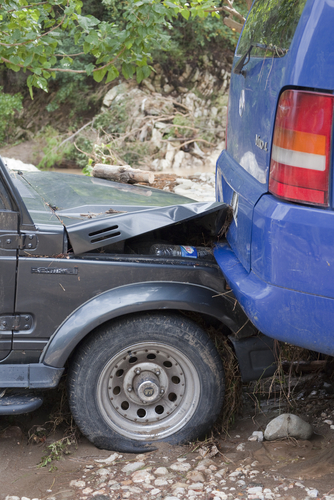Understanding Florida’s Comparative Negligence Laws
When someone is injured in an auto accident, the driver who is at fault should compensate the injured party for their losses. These are commonly referred to as “damages”. Damages could include direct monetary losses such as property damage, medical bills, and lost earnings, as well as noneconomic losses such as pain and suffering, psychological distress, and diminished quality of life.
If one driver is totally at fault for an accident, then everything is pretty straightforward; the driver who caused the accident would be responsible to cover 100% of the injured party’s losses. But what happens when more than one driver is at fault? For example, a collision occurs because one driver was speeding while the other driver abruptly changed lanes without signaling.
These types of situations are handled differently depending on which state the accident occurred in. States use the contributory negligence standard or some variation of comparative negligence in determining fault and awarding damages in a personal injury claim. Here is an overview of the two:
Contributory Negligence
This is the harshest legal standard for injury victims during a personal injury case. Under contributory negligence, an injured party can be barred from recovering compensation at all if they are found to have “contributed” in any way to the underlying accident or event. This means that even if an injured driver was just 1% at fault in a car accident, in a contributory negligence state, they would not be legally entitled to damages.
Florida once applied the contributory negligence standard prior to 1973. In those days, it was very difficult for someone to recover damages if they got hurt in an auto accident. Today, thankfully, our state now uses comparative negligence. But our neighbors in Alabama still use contributory negligence, so if you are ever involved in an accident in the Yellowhammer State, you will need to be aware that this is the standard that will be used.
Comparative Negligence
In a comparative negligence state, an injured party can still receive compensation even if they share some of the blame for the underlying accident. However, their damage award is reduced in proportion to the percentage of fault they share. For example, if someone suffered a total of $100,000 in compensable losses from an auto accident and they were determined to be 20% at fault, their damages would be reduced by $20,000, leaving them with a total of $80,000. Now had this happened in a contributory negligence state, the injured party would receive nothing.
It is important to note that there are different ways comparative negligence can be applied. A state could use pure comparative negligence or a modified version of this standard. Either system would divide the damages based on the percentage of fault the parties share in the accident, but they would differ on when an injured party is entitled to collect damages at all.
Under pure comparative negligence, an injured party can collect damages even if they are primarily at fault for the accident. So, even if you are 95% to blame, you can still recover 5% of the damages you would be entitled to. Under modified comparative negligence, an injured party can only recover compensation if they are less than 50% (or in some states 50% or less) at fault for the accident. Florida uses a pure comparative negligence standard.
How is Fault Determined in an Auto Accident?
During a motor vehicle accident or any other type of personal injury case, the percentage of fault each party shares is determined by the court. There are a number of factors that are weighed in arriving at this determination, such as the police report, visual evidence, the testimony of eyewitnesses and expert witnesses, and the strength of the arguments presented by the respective parties’ legal counsels. Many times, these cases are far from clear cut, and an experienced attorney can often effectively argue for a significantly higher or lower percentage.
You are probably also aware that a large percentage of personal injury cases are settled out of court. In such cases, fault is established between the parties during negotiations, based on the same types of evidence that would be presented in a trial as well as the strength of the arguments presented, and the negotiating skills of the parties involved. If a settlement cannot be negotiated, another form of alternative dispute resolution (such as arbitration or mediation) may be used to avoid going to trial.
Speak with a Seasoned Auto Accident Lawyer in Pensacola, FL
If you or a loved one suffered injury in a car accident, you need skilled legal counsel in your corner fighting hard to protect your interests. Florida’s comparative negligence laws give injury victims more hope of recovering compensation, but fault is not always clear, particularly if there are multiple parties involved in the accident. Florida’s no-fault motor vehicle insurance laws can further complicate matters, and an experienced auto accident attorney can help navigate the complexities of these types of cases.
If your accident happened in Pensacola or any of the nearby communities, contact Whibbs, Stone, & Barnett at 1-888-219-4561 or message us online for a free consultation and case assessment with one of our attorneys.



